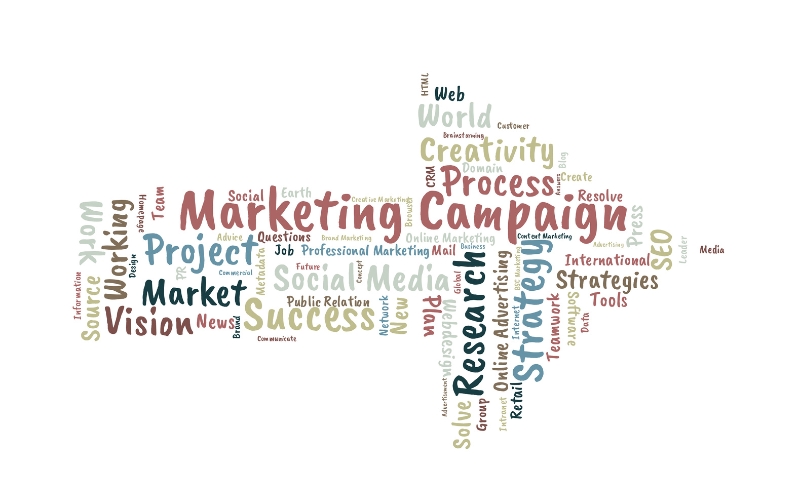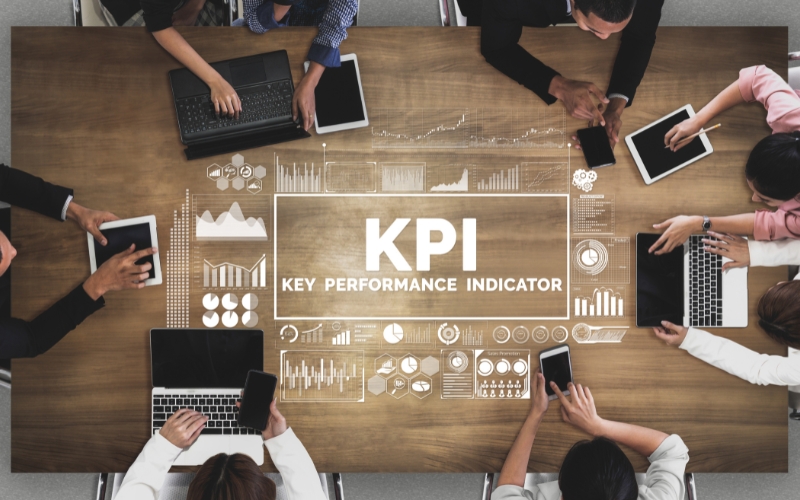
In today’s competitive business landscape, data-driven marketing has become a game-changer. By leveraging valuable customer insights, businesses can tailor their marketing strategies to meet the exact needs of their audience, ensuring greater relevance and higher engagement. At the core of this approach is the power of data, which enables companies to create highly targeted, personalized campaigns that not only resonate with customers but also drive measurable growth. Data-driven marketing is no longer just a trend; it’s a necessity for businesses looking to stay ahead of the curve and maximize their ROI.
Understanding the Power of Data in Marketing

Data-driven marketing is revolutionizing the way businesses approach their marketing strategies. By leveraging customer data and insights, businesses can create more effective campaigns that target the right audience with personalized messaging. At the core of data-driven marketing is the ability to gather, analyze, and apply valuable data to decision-making processes, ensuring a higher return on investment (ROI) and greater customer satisfaction.
One of the most significant advantages of data-driven marketing is its ability to shape marketing strategies based on real-time insights. Unlike traditional marketing, where decisions were often made based on intuition or assumptions, data-driven marketing relies on solid evidence. By analyzing customer behavior, such as website interactions, purchase history, and social media engagement, businesses can gain a clearer understanding of what resonates with their target audience. This insight enables marketers to create more tailored strategies, improving the relevance and effectiveness of their campaigns.
Customer insights are at the heart of data-driven marketing. By utilizing various tools like analytics platforms and customer relationship management (CRM) systems, businesses can track individual customer journeys and identify trends in preferences and behaviors. This data allows companies to segment their audience more effectively, ensuring that marketing efforts are tailored to each group’s specific needs and desires. For example, a business can identify high-value customers and develop targeted campaigns to retain them, or reach out to potential customers with personalized offers based on their interests.
Moreover, data-driven marketing enhances campaign performance by making it easier to measure and optimize efforts. Through continuous tracking of key performance indicators (KPIs) such as click-through rates, conversion rates, and customer acquisition costs, businesses can identify what is working and what is not. This allows for real-time adjustments to be made to campaigns, leading to better outcomes and minimizing wasted resources. By focusing on data-driven decisions, businesses can ensure that each marketing effort is aligned with their goals and delivers tangible results.
Key Data Sources for Effective Marketing Campaigns

In the world of data-driven marketing, the most effective campaigns are built on solid data. Understanding where to gather this data is key to crafting successful strategies. There are several primary data sources that can provide invaluable insights into customer behavior, campaign performance, and market trends. By leveraging these sources, businesses can optimize their marketing efforts and improve their ROI.
One of the most critical sources of data for data-driven marketing is customer behavior. This includes insights gathered from how customers interact with a brand’s products, services, and content. Customer data can be obtained through a variety of touchpoints, including purchases, interactions with customer service, and engagement with email campaigns or ads. Tracking this behavior helps marketers understand preferences, buying patterns, and even pain points. For instance, if a customer frequently browses a specific product category but doesn’t make a purchase, targeted retargeting campaigns can be created based on this behavior to drive conversions.
Another key data source is social media analytics. Social platforms like Facebook, Instagram, LinkedIn, and Twitter offer a wealth of data that can be used to understand how users engage with content. Data-driven marketing benefits from social media metrics such as likes, shares, comments, and click-through rates, providing insights into what types of content resonate with your audience. Additionally, social listening tools can track brand mentions and customer sentiment, which helps businesses stay in tune with the market and quickly respond to customer needs.
Website performance is also a crucial data source for effective marketing campaigns. Tools like Google Analytics offer in-depth insights into how visitors interact with a website, including metrics like page views, bounce rates, session duration, and conversions. These metrics allow marketers to assess which parts of the website are performing well and which areas may need improvement. For example, if users are consistently dropping off at a particular page, it could signal a usability issue or a disconnect in the customer journey, which can be addressed to improve the user experience.
Email campaign data is another valuable source. Open rates, click-through rates, and engagement levels can provide insights into the effectiveness of subject lines, content, and call-to-action (CTA) strategies. By analyzing this data, marketers can refine their email strategies for greater personalization and increased customer engagement.
Tools and Technologies to Analyze Marketing Data

In data-driven marketing, the ability to analyze and extract actionable insights from raw data is crucial for optimizing marketing campaigns and driving business growth. Various tools and technologies are available to help businesses collect, process, and analyze marketing data effectively. These tools allow marketers to transform large volumes of data into meaningful insights, enabling more informed decisions and improved ROI.
One of the most widely used tools in data-driven marketing is Google Analytics. This platform offers a comprehensive set of features that allow businesses to track website traffic, user behavior, and conversion rates. With Google Analytics, marketers can monitor metrics like bounce rates, session durations, and pages per session to assess the effectiveness of their website content. It also provides insights into where website visitors are coming from, helping businesses tailor their marketing strategies for different traffic sources. By integrating Google Analytics with other marketing tools, businesses can get a complete view of their digital marketing efforts.
For businesses focusing on social media marketing, tools like Hootsuite and Sprout Social offer powerful analytics capabilities. These platforms allow businesses to track social media performance across multiple channels, measuring metrics such as engagement rates, impressions, and follower growth. Data-driven marketing benefits greatly from social media analytics because it helps businesses understand what type of content resonates with their audience, allowing them to fine-tune their social media strategies. These tools also offer sentiment analysis, enabling businesses to gauge customer sentiment and adapt their marketing campaigns accordingly.
Customer Relationship Management (CRM) software like Salesforce and HubSpot are also essential tools for data-driven marketing. CRMs provide detailed insights into customer interactions and sales pipelines, allowing businesses to segment their audience based on various criteria such as behavior, demographics, and purchase history. By integrating CRM data with marketing campaigns, businesses can deliver highly targeted, personalized experiences to customers, increasing engagement and conversion rates.
Additionally, email marketing platforms like Mailchimp and Klaviyo are critical for analyzing email campaign performance. These platforms offer data on open rates, click-through rates, and user engagement, helping businesses optimize their email marketing efforts. By using these insights, marketers can personalize email content, adjust subject lines, and segment email lists to improve deliverability and customer engagement.
Creating Personalized Marketing Strategies with Data

One of the most significant advantages of data-driven marketing is the ability to create personalized marketing strategies. By leveraging customer data, businesses can better understand their audience, segment them effectively, and tailor messaging that resonates with each group. Personalized marketing ensures that customers receive relevant content at the right time, which boosts engagement and increases conversion rates.
The first step in creating a personalized marketing strategy is audience segmentation. Data-driven marketing allows businesses to segment their audience based on various criteria such as demographics, purchasing behavior, browsing history, and even social media interactions. For example, a business can use data to segment their audience into groups like new customers, repeat buyers, or those who have abandoned their shopping carts. By understanding the specific needs and behaviors of each segment, businesses can deliver targeted content and offers that speak directly to each group’s interests and pain points.
Once the audience is segmented, businesses can use targeted messaging to engage each group effectively. Data-driven marketing enables companies to craft messaging that appeals to the unique preferences of different segments. For instance, customers who have previously purchased a product may appreciate a follow-up email offering related products or discounts, while new customers may benefit from an introductory message that educates them about the brand and its offerings. By using data to create tailored messages, businesses can ensure that their communication feels personal, relevant, and valuable, increasing the likelihood of a positive response.
In addition to messaging, content optimization is another critical aspect of personalized marketing. Data-driven marketing helps businesses identify what type of content performs best with specific audience segments. By analyzing user behavior and interactions with past content, businesses can determine which types of blog posts, videos, or social media content resonate most with their audience. For example, if data shows that a particular segment engages more with educational videos than written articles, businesses can optimize their content strategy to focus more on video production. This level of customization increases engagement and enhances the overall customer experience.
Moreover, data allows businesses to optimize timing and delivery. By analyzing customer behavior patterns, companies can determine the best times to send emails, post on social media, or run ads. This ensures that the right message reaches the right audience at the optimal time, increasing the chances of conversion.
Measuring Success: Metrics and KPIs for Data-Driven Marketing

Measuring the success of data-driven marketing efforts is essential to understanding the impact of campaigns and optimizing future strategies. By leveraging key performance indicators (KPIs) and other relevant metrics, businesses can assess the effectiveness of their marketing activities, track progress toward goals, and make data-backed decisions to improve performance. Without proper measurement, it’s impossible to know whether marketing efforts are truly driving growth or if changes are needed.
One of the most critical KPIs in data-driven marketing is the conversion rate. This metric tracks the percentage of users who take a desired action, such as making a purchase, signing up for a newsletter, or downloading a whitepaper. By analyzing conversion rates, businesses can determine how effective their campaigns are at turning potential leads into customers. A higher conversion rate indicates that the marketing messages, landing pages, and calls to action are resonating with the audience. In contrast, a lower conversion rate may highlight areas that need optimization.
Another important KPI is customer acquisition cost (CAC). This metric calculates the total cost of acquiring a new customer, including expenses related to advertising, content creation, and marketing campaigns. By tracking CAC, businesses can evaluate the efficiency of their data-driven marketing efforts. If the cost of acquiring customers is high, it might indicate that the marketing strategies need to be fine-tuned to target the right audience more effectively or optimize resource allocation.
Customer lifetime value (CLV) is another essential metric for measuring the long-term effectiveness of data-driven marketing. CLV represents the total revenue a customer is expected to generate over their entire relationship with a business. By analyzing CLV, businesses can understand how well their marketing efforts are fostering customer loyalty and repeat purchases. A higher CLV means that marketing is not only acquiring customers but also keeping them engaged, making them more likely to become repeat buyers.
In addition to these KPIs, engagement metrics like click-through rates (CTR), bounce rates, and social media interactions provide valuable insights into how well content is resonating with the target audience. These metrics help businesses understand whether their audience is engaging with the content and how effectively the message is being communicated.
Finally, ROI (Return on Investment) is a vital metric in data-driven marketing. ROI measures the profitability of marketing campaigns by comparing the revenue generated to the costs incurred. By calculating ROI, businesses can determine which marketing efforts deliver the best returns and justify marketing spend.
Conclusion
To truly maximize the impact of data-driven marketing, businesses can benefit from integrating advanced analytics tools. For example, platforms like HubSpot offer comprehensive solutions to help businesses track, analyze, and optimize their marketing efforts. These tools provide valuable insights into customer behavior and campaign performance, making it easier to implement targeted strategies that boost engagement and drive growth. Leveraging such tools in your data-driven marketing strategy can help unlock new opportunities for scaling your business.
In conclusion, embracing data-driven marketing is crucial for businesses aiming to stay competitive and achieve sustained growth. By harnessing data from various sources, creating personalized strategies, and measuring key metrics, companies can refine their marketing efforts to achieve better results. With the power of data at their fingertips, businesses can make informed decisions, optimize campaigns in real-time, and ensure that every marketing effort is aligned with their goals. As data continues to shape the marketing landscape, companies that prioritize data-driven marketing will be better positioned to thrive in the evolving marketplace.
For more details or to discuss your specific Digital Marketing requirements, visit our AI Scope Digital page.

